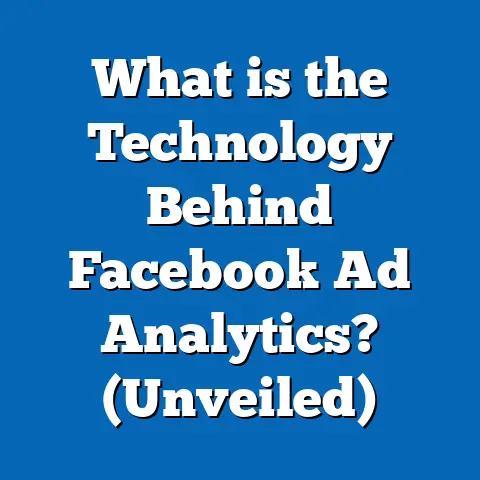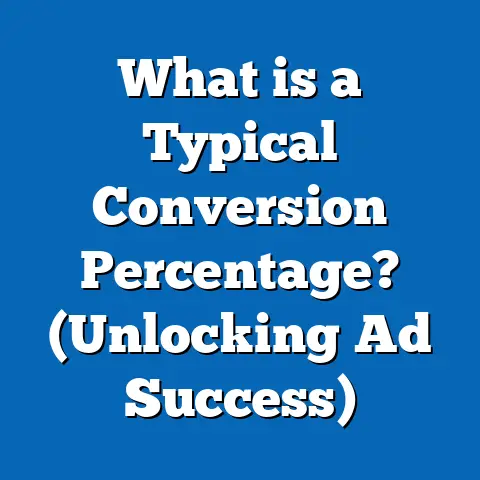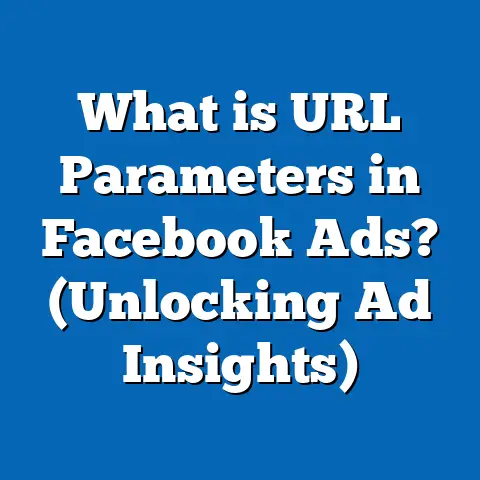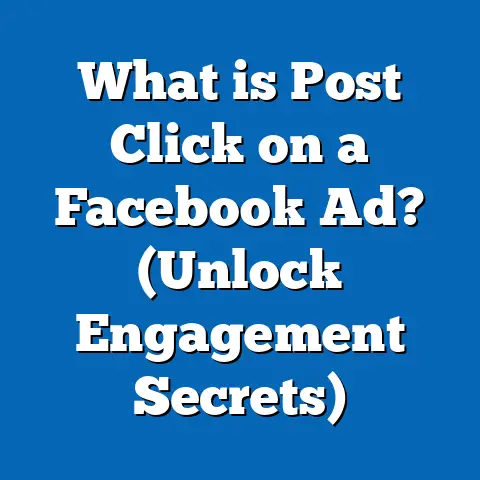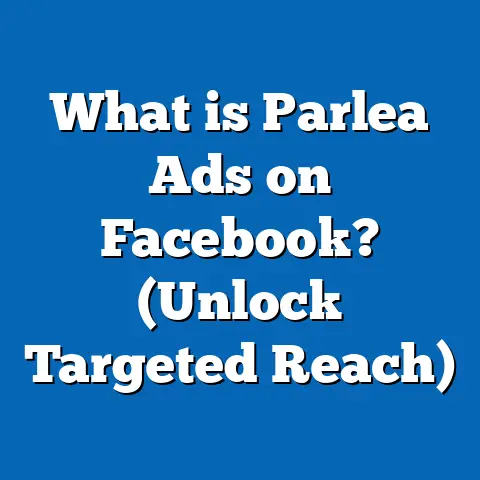What is Ad Creative on Facebook? (Unlock Your Engagement Potential)
Introduction: The Frustration of Low Engagement in Facebook Ads
Many marketers and business owners often complain about Facebook ads that just don’t perform. They pour budget into campaigns, only to see low click-through rates, minimal engagement, and disappointing conversions. The common question arises: Why aren’t my Facebook ads working? In many cases, the culprit is not the targeting or even the budget—it’s the ad creative. Your ad creative is the face of your campaign, and if it doesn’t capture attention or resonate with your audience, your entire ad spend can go to waste.
What Is Ad Creative on Facebook?
Definition and Core Components
Ad creative refers to the visual and textual elements that make up a Facebook advertisement. This includes:
- Images or videos: The primary visual content designed to capture attention.
- Headline: The bold text that summarizes the offer or message.
- Primary text: The main description or narrative accompanying the visual.
- Call-to-action (CTA): The prompt encouraging users to take a specific action.
- Link description (optional): Additional text providing context for clickable ads.
Facebook ad creative is what users first see and interact with, making it a crucial factor in campaign success.
The Role of Ad Creative in the Facebook Ecosystem
Facebook’s ad platform is built to serve ads that are relevant and engaging to users, using an auction system where ads with higher engagement often cost less per result. The ad creative directly affects how users perceive your ad. Facebook’s algorithm rewards creatives that generate more actions through better placement and lower costs.
Why Ad Creative Is a Game-Changer for Facebook Advertising
Attention Economy and User Behavior
Facebook users scroll through their newsfeeds at high speed. According to a study by Microsoft, the average human attention span is approximately 8 seconds—shorter than that of a goldfish. This means your ad creative has only moments to grab attention.
Data from Facebook shows that more than 70% of users decide whether to engage with an ad based on its visual content alone.
The Cost of Poor Creative
Poorly designed or irrelevant creatives can lead to:
- High cost per click (CPC)
- Low click-through rate (CTR)
- Poor ad relevance scores
- Increased cost per conversion
- Wasted ad spend
For example, an analysis by AdEspresso revealed that ads with weak creatives had CPCs up to 40% higher than those with compelling visuals.
Positive ROI Correlates Strongly with Creative Quality
According to Nielsen’s Global Trust in Advertising report:
- 47% of consumers say they look for creative content before purchasing.
- Ads with strong creativity deliver up to two times higher sales impact.
Therefore, investing time and resources in creating effective ad creative is essential for maximizing return on investment.
Components of Effective Facebook Ad Creative
Visuals: The Power of Images and Video
Visual content drives attention in crowded news feeds. Here are some tips for creating effective visuals:
- Use high resolution and clear images or videos.
- Incorporate brand colors and logos for recognition.
- Show products in use rather than just standalone shots.
- Use short videos (15-30 seconds) for better retention.
Data from HubSpot shows that video posts on Facebook generate 135% more organic reach compared to image posts.
Image Ads vs Video Ads: What Works Best?
- Image ads are simple and quick to produce. They work well for clear, straightforward offers or brand awareness.
- Video ads provide storytelling opportunities and can demonstrate product usage effectively. They engage viewers longer and are favored by Facebook’s algorithm.
For instance, Facebook reports that video ads are watched an average of 6x longer than static images retain attention.
Best Practices for Visuals
- Use faces showing genuine emotions. Studies show ads featuring human faces get 38% more clicks.
- Avoid cluttered backgrounds; keep focus on the product or message.
- Use contrasting colors to stand out.
- Caption videos for sound-off autoplay scenarios.
Text: Crafting Headlines and Primary Text
Your copy should complement visuals by:
- Being concise but impactful.
- Highlighting unique selling points or offers.
- Including emotional or value-driven language.
For instance, a headline like “Transform Your Skin in 7 Days” is more compelling than “Skincare Products Available.”
How Much Text Is Too Much?
Facebook recommends keeping primary text under 125 characters for optimal mobile display and engagement. Ads with shorter text tend to perform better as they respect limited user attention spans.
Using Emotional Triggers in Copy
Words that evoke curiosity, urgency, exclusivity, or happiness can boost engagement:
- “Limited time offer” creates urgency.
- “Exclusive deal” fosters exclusivity.
- “Imagine feeling confident” taps into emotions.
Call-to-Action (CTA)
Effective CTAs guide users clearly. Examples include:
- “Shop Now”
- “Learn More”
- “Sign Up Today”
According to a Facebook Ads study, campaigns with clear CTAs see an average of 20% higher conversions than those without.
Where to Place CTAs?
CTAs should be prominent but natural:
- Within the primary text as a final prompt.
- As buttons provided by Facebook’s ad formats.
Make sure your CTA aligns with the user journey. For awareness campaigns, “Learn More” fits better than “Buy Now.”
Detailed Case Studies Demonstrating the Power of Ad Creative
Case Study 1: Clothing Brand Boosts Sales by 40% with New Creative Strategy
A mid-sized clothing retailer revamped their Facebook ad creative by introducing:
- High-quality lifestyle videos showing models using products in daily life.
- Clear, benefit-focused headlines.
- Strong CTAs like “Shop Now” and “Limited Time Offer.”
Within three months, they saw:
- A 40% increase in sales attributed to Facebook ads.
- A 35% increase in CTR.
- A 25% decrease in cost per purchase.
Case Study 2: SaaS Company Doubles Lead Generation Through Video Storytelling
A SaaS company offering project management tools shifted from static image ads to short explainer videos demonstrating product benefits.
Results over 6 months:
- Lead volume doubled.
- Cost per lead decreased by 30%.
- Engagement rates increased by 50%.
This example shows how video storytelling can clarify value propositions and drive conversions.
Advanced Strategies for Optimizing Facebook Ad Creative
Dynamic Creative Optimization (DCO)
Facebook’s Dynamic Creative feature allows you to upload multiple images, headlines, and texts. The platform automatically tests combinations to find the best-performing creative mix.
Data shows DCO can improve campaign ROI by up to 35% because it tailors creatives dynamically.
Personalization and Segmentation
Personalizing creatives based on audience data increases relevance. Tactics include:
- Using location-specific images or offers.
- Tailoring copy for demographics (age, gender).
- Leveraging past purchase behavior for retargeting creatives.
Research from Epsilon found that 80% of consumers are more likely to buy when brands offer personalized experiences.
A/B Testing for Continuous Improvement
Running split tests on different creatives helps identify which elements work best. Test variables such as:
- Image vs. video
- Short vs. long headlines
- Different CTA buttons
Successful marketers report that consistent A/B testing improves CTR by an average of 15-25% over time.
Leveraging User-Generated Content (UGC)
User-generated content like customer photos or testimonials adds authenticity and trustworthiness. Facebook reports UGC-based ads can increase conversion rates by 4x compared to traditional brand ads.
Technical Details: Optimizing Facebook Ad Creative for Platforms & Formats
Understanding Facebook Ad Formats
Facebook offers several ad formats; each requires specific creative considerations:
- Single Image Ads
- Simple, effective for direct messages.
- Use high-quality images optimized at 1200 x 628 pixels.
- Video Ads
- Recommended aspect ratios: 4:5 or 1:1 for feed; vertical (9:16) for stories.
- Keep videos under 15 seconds where possible.
- Carousel Ads
- Multiple images/videos in a single ad unit.
- Each card can have unique headlines and links.
- Great for showcasing product ranges.
- Collection Ads
- Feature a cover image/video plus related product images beneath.
- Designed for mobile shopping experiences.
- Stories Ads
- Full-screen vertical ads appearing between user stories.
- Creatives must be vertical (9:16) and brief (up to 15 seconds).
Mobile vs Desktop Considerations
Since over 98% of Facebook users access via mobile, creatives must be optimized for small screens:
- Use large fonts.
- Avoid cluttered visuals.
- Test creatives on different devices before launch.
Common Mistakes in Facebook Ad Creative and How to Avoid Them
- Overloading Text on Images
- Facebook limits text overlay; too much text reduces reach.
- Use Facebook’s Text Overlay Tool to check compliance.
- Ignoring Mobile Optimization
- Creatives designed only for desktop may appear cropped or unclear on mobile.
- Lack of Clear CTA
- Ambiguous or missing CTAs confuse users and reduce conversions.
- Using Stock Photos Without Context
- Generic stock photos lead to low engagement due to lack of authenticity.
- Neglecting Consistency Between Visuals and Copy
- Mismatch confuses audiences and reduces trust.
How to Measure the Effectiveness of Your Facebook Ad Creative
Key Metrics to Track
| Metric | What It Measures | Why It Matters |
|---|---|---|
| Click-through Rate (CTR) | Percentage clicking your ad | Indicates relevance and interest |
| Engagement Rate | Likes, comments, shares | Shows social proof & organic reach |
| Conversion Rate | Percentage completing desired action | Measures final success |
| Cost per Click (CPC) | Amount paid per click | Helps manage budget efficiency |
| Relevance Score / Quality Ranking | Facebook’s rating of ad quality | Influences delivery & cost |
| Video View Rate | Percentage watching video | Measures visual engagement |
Tools for Measurement
Facebook Ads Manager provides detailed reports on all above metrics. Additionally:
- Google Analytics can track post-click behavior.
- Heatmaps help understand user interaction on landing pages post-click.
Comparing Facebook Ad Creative with Other Social Platforms
Facebook vs Instagram
Instagram is highly visual and favors polished images and stories. While Facebook supports diverse ad formats, Instagram’s audience prefers aspirational visuals and influencer collaborations.
Instagram Stories ads require vertical, immersive content often featuring quick cuts and trendy music, while Facebook allows more variety in format length and style.
Facebook vs Google Ads
Google Ads focuses more on keyword intent and text ads, while Facebook emphasizes visual storytelling and engagement. Creative on Facebook needs to captivate users who are not actively searching but scrolling.
Google’s search ads rely heavily on keyword match relevance, whereas Facebook creatives must spark interest without explicit search intent.
Practical Tips for Designing High-Converting Facebook Ad Creatives
- Start with your audience’s pain points or desires.
- Use clear, bold visuals that stand out in feeds.
- Keep text short but persuasive; focus on benefits.
- Test multiple variations regularly.
- Use video where possible—motion captures attention better.
- Integrate social proof like testimonials or reviews in visuals or copy.
- Ensure mobile optimization since over 98% of Facebook users access via mobile devices.
- Leverage current trends like AR filters or interactive elements when appropriate.
- Use retargeting creatives tailored specifically for warm audiences who already interacted with previous ads or website visits.
The Future of Facebook Ad Creative: Trends to Watch in 2024 and Beyond
Short-form Video Dominance
Inspired by TikTok’s massive success, short videos—often under 15 seconds—are becoming the norm across social platforms including Facebook. These videos prioritize fast storytelling, humor, or emotional hooks within seconds.
Augmented Reality (AR) Ads
AR ads allow users to interact with virtual objects overlaid on their environment through their phone camera. For example, furniture brands let users preview items in their homes virtually before buying.
AI-Powered Creative Tools
Artificial intelligence tools are increasingly used for generating ad copy suggestions, automatic image cropping, and even video creation based on user data trends—helping marketers save time while improving effectiveness.
Authenticity Over Polished Perfection
Audiences increasingly favor genuine content over highly polished ads. User-generated content, behind-the-scenes looks, and influencer collaborations provide relatable authenticity that drives engagement.
Conclusion: Unlock Your Engagement Potential Through Better Ad Creative
Facebook advertising success hinges largely on your ability to create compelling ad creative that captures attention quickly, speaks directly to your audience’s needs, and encourages meaningful action.
Key Takeaways:
- Ad creative is the cornerstone of effective Facebook advertising.
- Strong visuals combined with compelling copy drive better engagement.
- Utilize tools like Dynamic Creative Optimization for better results.
- Personalization and continuous A/B testing enhance performance.
- Stay updated on trends like short-form videos and AR experiences.
Next Steps for Marketers and Business Owners:
- Audit current creatives based on performance metrics—identify weak points.
- Experiment with new formats focusing on video and interactive content.
- Use dynamic creative testing tools provided by Facebook to optimize automatically.
- Personalize creatives based on segmented audience insights.
- Track metrics closely; iterate frequently based on data-driven insights.
Invest time into refining your ad creative today—and watch your engagement rates soar as your campaigns start delivering real ROI tomorrow.
If you want me to add specific examples of tools for creative design or detailed walkthroughs for certain ad formats, please let me know!

